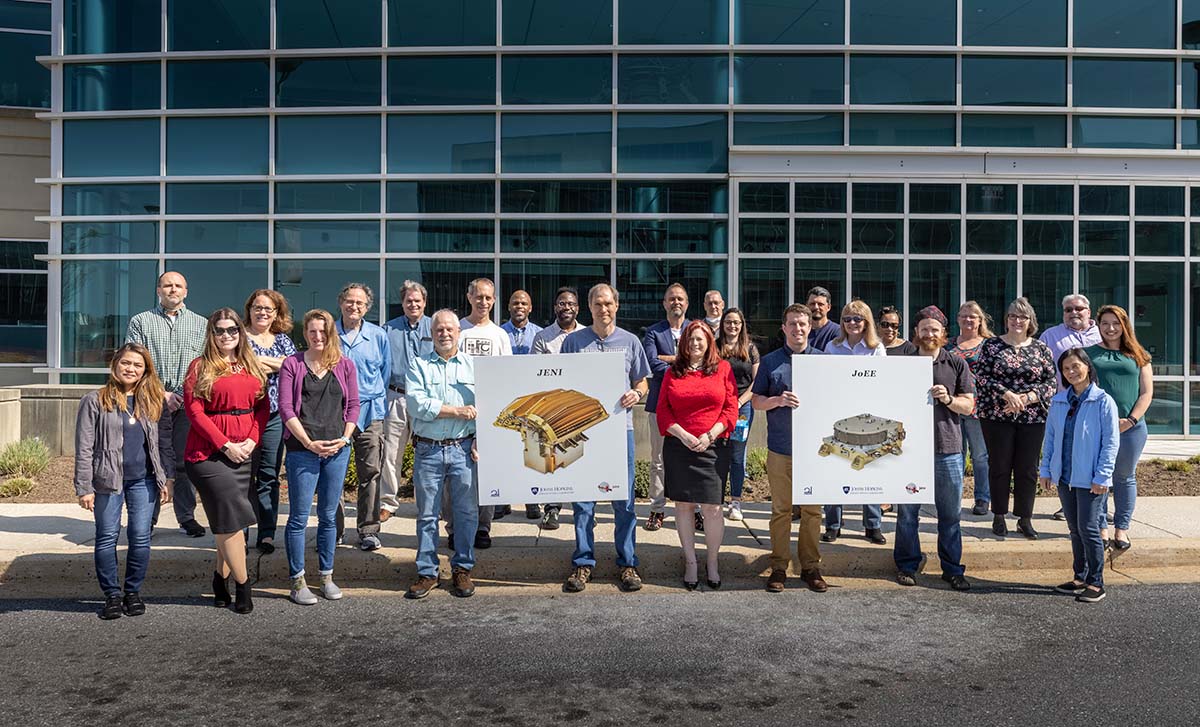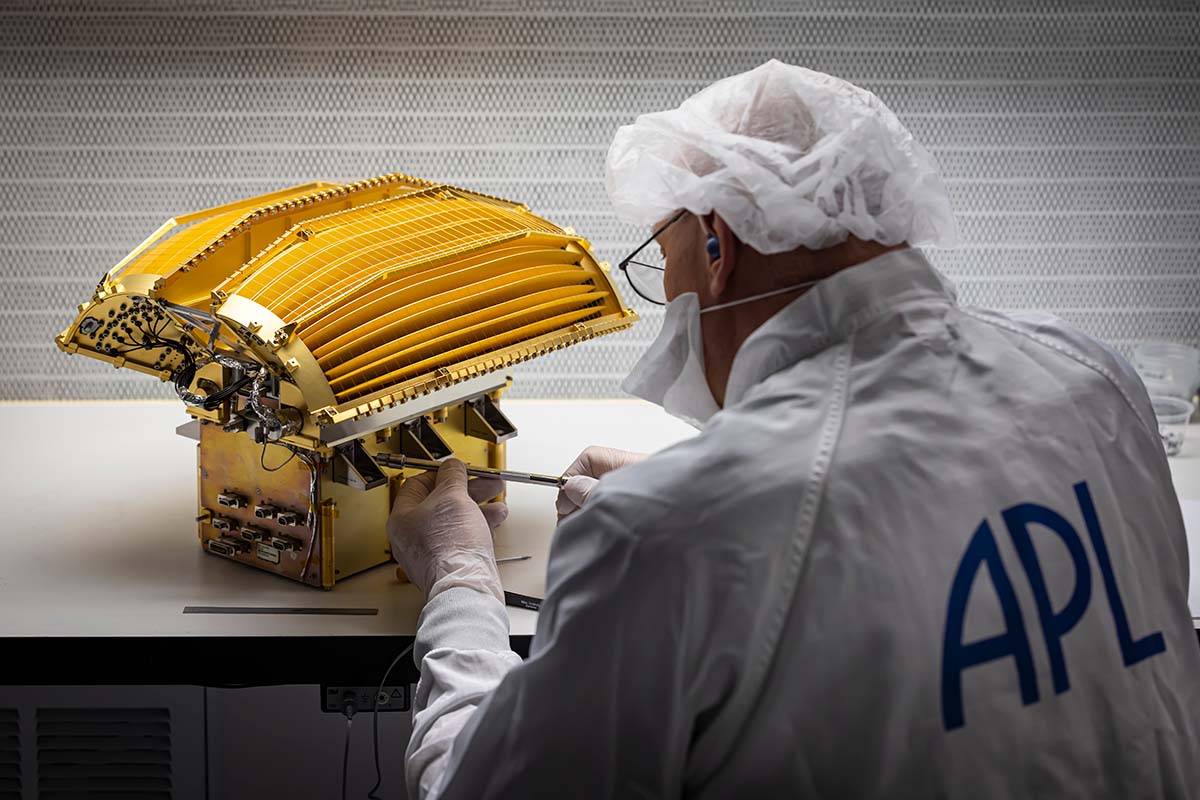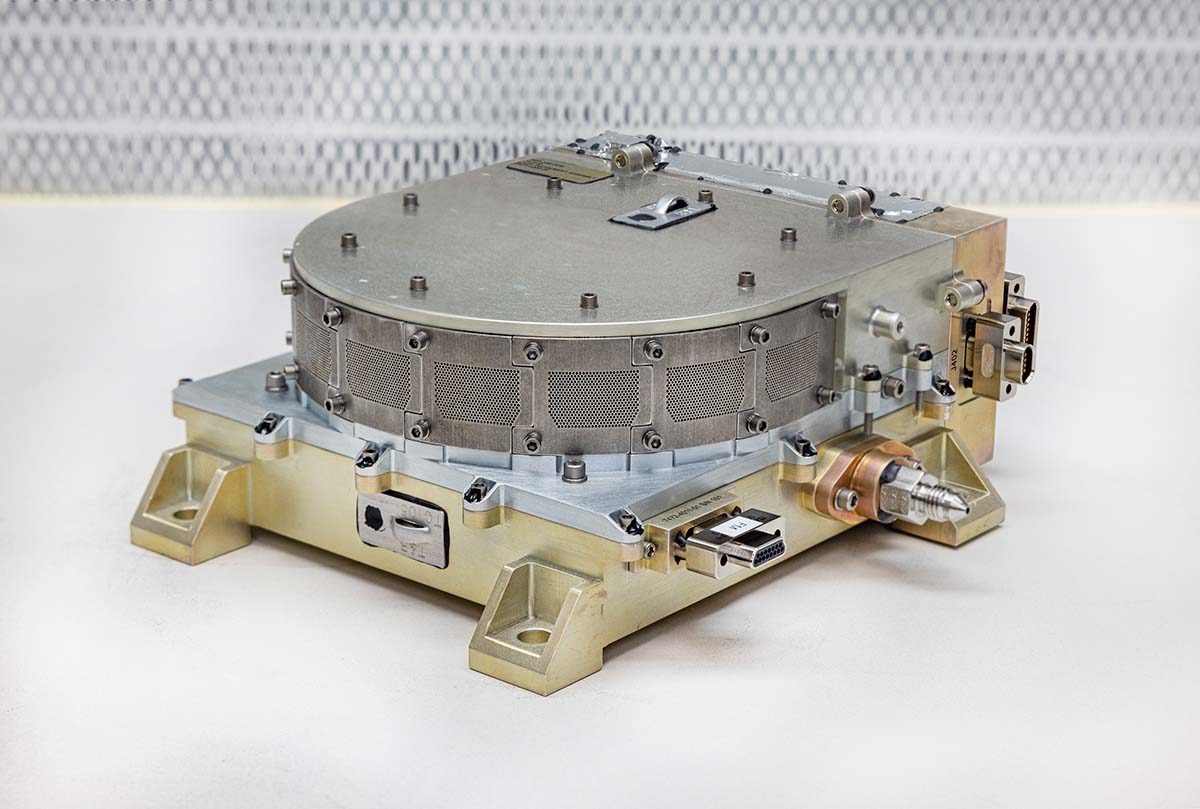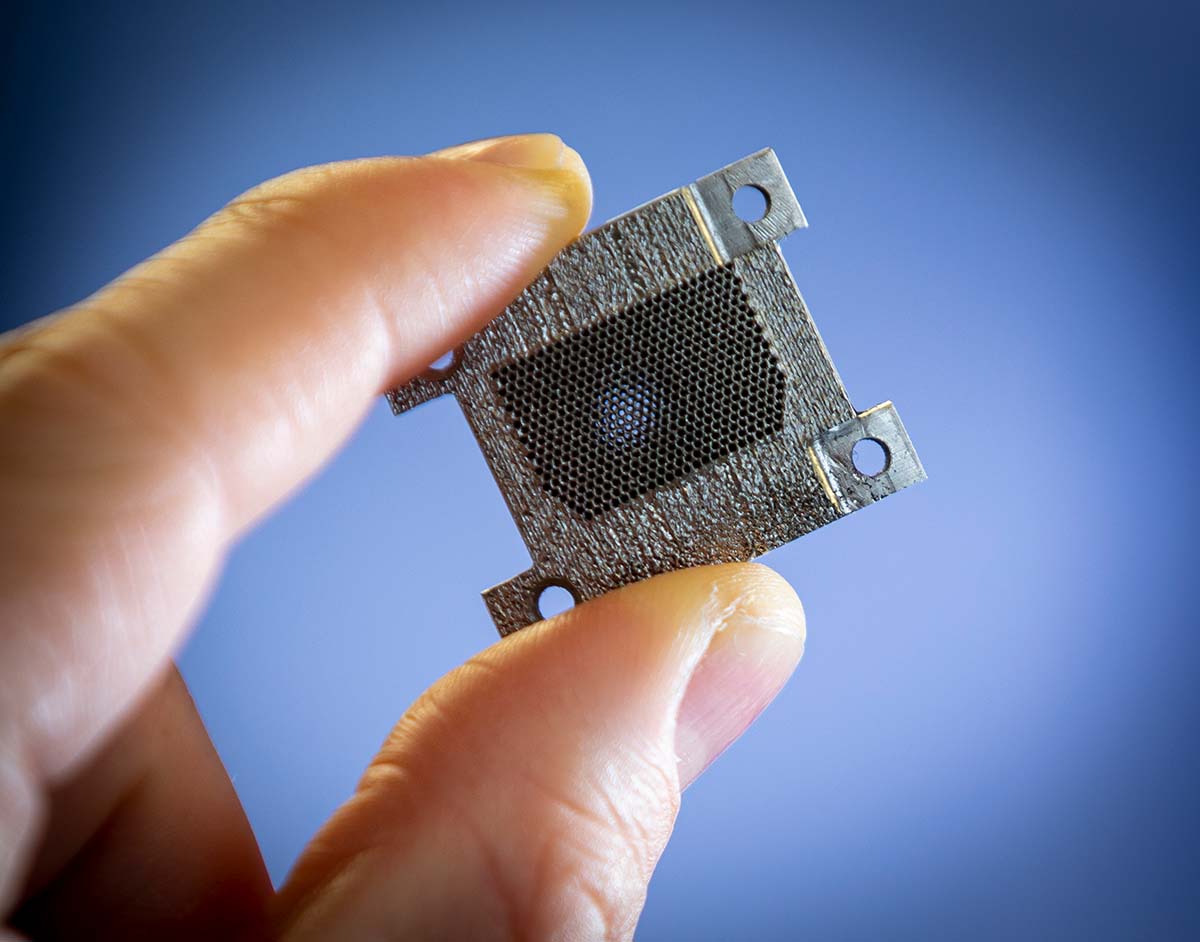News
Space Particle Instrument Prepped and Primed for Jovian Journey
After a decade in the making, the Particle Environment Package (PEP)-Hi instruments, built by the Johns Hopkins Applied Physics Laboratory (APL) in Laurel, Maryland, for an upcoming mission to Jupiter, are finished and prepped for spacecraft installation.
PEP-Hi, comprising two particle detection instruments — Jupiter Energetic Neutrals and Ions (JENI) and Jovian Energetic Electrons (JoEE) — is scheduled to ship in June to Airbus Defense in Toulouse, France, where later this summer it will be installed on the European Space Agency’s JUpiter Icy moons Explorer (JUICE) spacecraft. The two innovative instruments are part of the larger PEP suite of six instruments, led by Stas Barabash at the Swedish Institute of Space Physics in Kiruna.
Slated to launch in September 2022, JUICE will study Jupiter and three of its largest moons, Ganymede, Callisto and Europa, each of which scientists believe hosts a liquid water ocean beneath icy surfaces. JoEE and JENI, which are part of NASA’s contribution to the mission, will play a significant role in uncovering never-before-seen details about the Jovian system, especially the radiation environment around it and the planet’s interactions with its moons.
“These are unprecedented instruments,” said APL’s Cori Battista, the PEP-Hi program manager. “I am excited to see what they send back because they will be contributing groundbreaking science.”
Seeing Unimaginable Things
Bedecked in gold plating and flared out like a hand fan, JENI will act as both an ion spectrometer and energetic neutral atom (ENA) imager, a type of camera that captures images using atoms instead of light. That difference allows it to photograph invisible space phenomena, such as a planet’s magnetosphere and, of particular interest, the trail of gas from Jupiter’s icy moon Europa.



